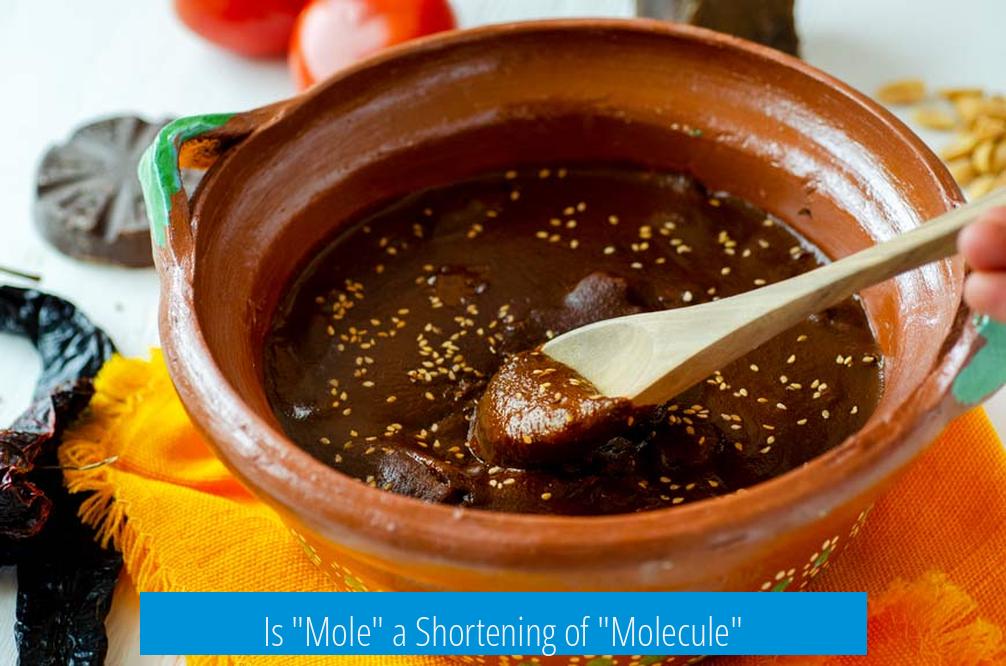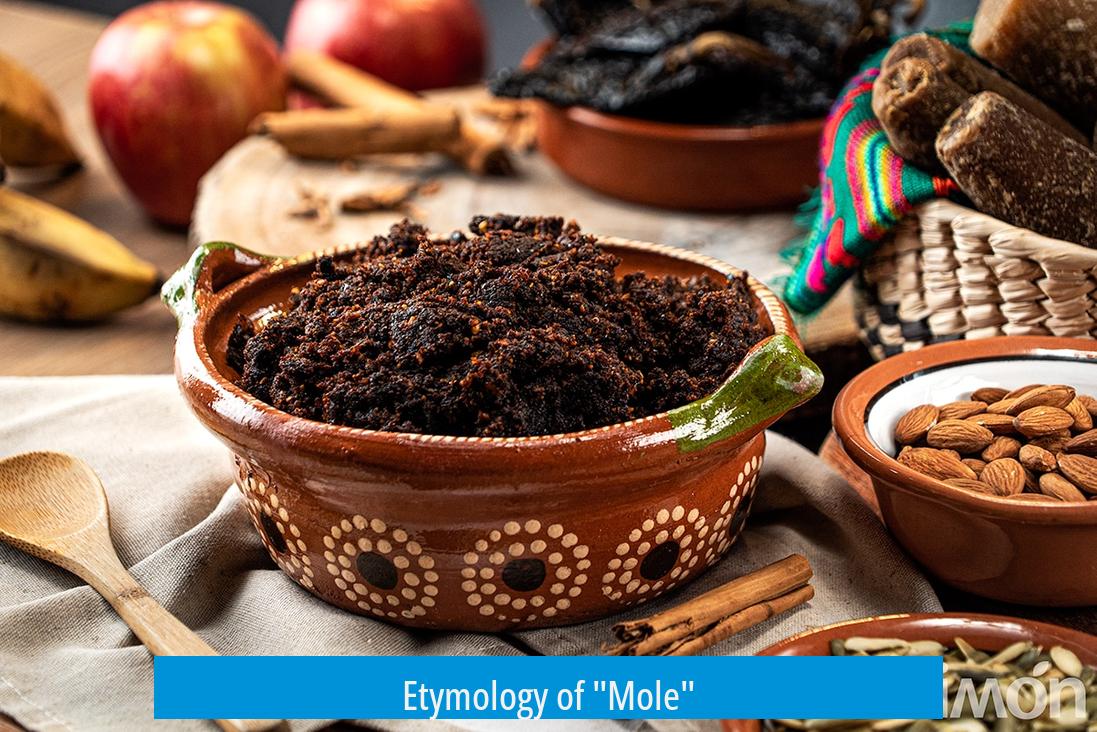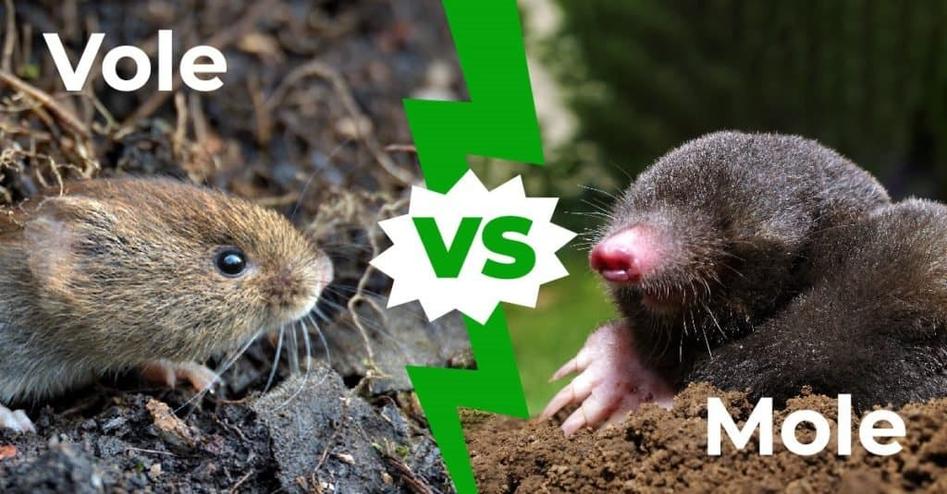Is “Mole” a Shortening of “Molecule”?
 The term mole is not simply a shortening of the word molecule. The mole is an SI unit representing a quantity of substance, defined as exactly 6.022×1023 entities, such as atoms or molecules. Although the word mole has etymological roots linked to molecule, they are distinct concepts used differently in chemistry.
The term mole is not simply a shortening of the word molecule. The mole is an SI unit representing a quantity of substance, defined as exactly 6.022×1023 entities, such as atoms or molecules. Although the word mole has etymological roots linked to molecule, they are distinct concepts used differently in chemistry.
Distinction Between Mole and Molecule
Molecules are actual particles—groups of atoms bonded together forming the smallest units of a compound. The term “molecule” describes physical entities and structures.

The mole, abbreviated as mol, is not a particle but a unit of measurement. It quantifies amount by counting a fixed number of entities regardless of type. One mole equals Avogadro’s number, 6.022×1023, of anything—atoms, ions, or molecules.
- Mole ≠ molecule
- Mole (mol) = amount unit
- Molecule = structural particle
- Lots of molecules can make one mole
Etymology of “Mole”

The origin of the term “mole” traces back to German chemist Wilhelm Ostwald in 1894. Ostwald coined the word Mol, derived from the German Molekül (meaning molecule) and used in “gram-molecular weight.”
Essentially, mole evolved as a convenient term for expressing gram-molecular weight, helping chemists avoid long expressions like “gram-molecular weight.” Although mole shares roots with molecule, it emerged to describe amount, not structure.

Scientific Definition and Usage
| Term | Meaning | Use in Chemistry |
|---|---|---|
| Mole (mol) | Amount of substance | 1 mol = 6.022×1023 entities |
| Molecule | Smallest particle of compound | Physical unit, e.g., H2O molecule |
The mole plays a fundamental role in stoichiometry and chemical calculations, enabling chemists to convert between microscopic particles and macroscopic amounts.

Common Misconceptions and Personal Realizations
Many learners initially assume mole is an abbreviation or shortening of molecule. This is a common and understandable confusion. The two concepts are chemically related by name and etymology but serve very different functions.

Lack of awareness about the mole’s definition does not imply ignorance. Realizing the difference enhances understanding of chemistry foundations.
Key Takeaways
- Mole is an SI unit measuring amount, not an abbreviation for molecule.
- Mole originated from German “Mol,” linked semantically but not equivalent to molecule.
- One mole contains 6.022×1023 particles, a count, not a structure.
- Molecule means a small particle made of atoms.
- Mixing mole and molecule is a common misconception, and clarifying this aids study progress.
Is “Mole” Just a Shortened Form of “Molecule”? Let’s Set the Record Straight
So, you’ve just realized—or are clarifying—that “mole” is not simply a shortening of “molecule”. And you’re wondering, “Am I stupid for mixing them up?” Absolutely not! In fact, this is a surprisingly common confusion. Let’s dive into why these terms are related yet quite different.
Mole vs. Molecule: What’s the Real Difference?
First things first, a mole is not a molecule. This is a classic chemistry mix-up, but they have very distinct meanings and uses.
- Molecule: The smallest unit of a chemical compound that can exist; made up of atoms bonded together. Think water (H2O) or oxygen (O2).
- Mole: The SI unit that measures the amount of substance, denoted as mol. One mole is exactly 6.022×1023 of any “entity” — molecules, atoms, ions, electrons—you name it.
Picture “molecule” as the single leaf and “mole” as the forest full of—wait for it—over 602 sextillion leaves!
The Etymology: Why Do They Sound So Similar?
Here’s the plot twist. While “mole” and “molecule” share an etymological root, the mole is not just a lazy abbreviation. It actually has a fascinating origin in chemistry history.
The term “mole” is a translation of the German word Mol, which itself comes from Molekül (molecule). Around 1894, chemist Wilhelm Ostwald coined “Mol” as a shorthand for “gram-molecular weight,” a cumbersome phrase. By 1897, the English-speaking science world adopted “mole” as the unit name.
So, mole’s origin is semantically related to molecule, but it’s a term specially created to represent a quantity rather than a structural particle.
Why Confusing “Mole” with “Molecule” Is Totally Understandable
If you’ve spent years studying chemistry and just discovered this, you’re not alone. The connection isn’t straightforward unless you’ve paused to think about the roots and precise definitions.
“Holy… over 20 years of chemistry, I never thought mol had anything to do with molecule.” – Common Realization
Many students and even professionals initially believe the mole is a quirky shorthand for molecule or just a typo. It’s not. The mole measures quantity; the molecule represents a type of particle. Mixing them is like confusing “dozen” (a count) with “egg” (the item counted). Sure, related but not interchangeable.
What Exactly Is a Mole, Scientifically Speaking?
In the science realm, the mole is a carefully defined physical quantity. It represents 6.022×1023 entities of the substance you’re counting. This number is called Avogadro’s number.
For example:
- One mole of water molecules means you have 6.022×1023 water molecules.
- One mole of carbon atoms is 6.022×1023 carbon atoms.
It’s essential to appreciate that the mole is unit of measurement, while the molecule is a physical object.
So, Are You Stupid? Absolutely Not.
This misconception is widespread and almost expected given the linguistic similarity. Remember, the term mole emerged to simplify language in chemistry, but its meaning expanded beyond the narrow “molecule.”
Here’s a lighthearted tip: next time you get chemistry jargon tangled, just remind yourself that mole is the giant crowd counting tool, while molecule is the individual person in the crowd.
Understanding This Confusion Can Improve Your Chemistry Insight
Knowing the distinction helps not just with memorizing terminology but with conceptual clarity. Students often get mixed up because chemistry textbooks throw in “mol” and “molecule” without explaining their separate roles clearly.
For example, when calculating reactions, saying “1 mole of H2O” helps scientists understand quantities consistently. Saying “1 molecule of H2O” is almost meaningless at lab scale since molecules are tiny and billions multiply quickly.
Here’s Some Quick Advice for Chemistry Learners:
- Always remember: mole = quantity unit, molecule = particle. They serve different purposes.
- Use mole when measuring or balancing chemical equations.
- Don’t treat “mol” as a shortened “molecule”—it’s a distinct term.
- If confused, explain it like this: “A mole is to a molecule what a dozen is to an apple.” One counts, the other names the thing counted.
Got it now? Great! If not, you’re not alone, and with a tiny bit of humor and patience, the chemistry world suddenly becomes a lot clearer.
Summary Table for Quick Reference
| Term | Meaning | Origin | Typical Use |
|---|---|---|---|
| Molecule | Smallest unit of a compound (atoms bonded) | Latin/Greek roots, describing ‘small mass units’ | Discuss chemical structure, properties |
| Mole (mol) | Amount of substance unit = 6.022×1023 entities | Derived from German Mol, linked to Molekül | Counting particles in chemistry, balancing equations |
So next time you see “mol,” feel proud of your chemistry savvy — you know it’s more than a molecule shortcut. Instead, it’s a powerful unit that lets chemists count the almost-unimaginable number of particles that fill our world.
Is the word “mole” just a shortened form of “molecule”?
No, “mole” is not simply a shortening of “molecule.” The mole is a separate unit in chemistry that measures the amount of substance, while molecule refers to a specific group of atoms bonded together.
Where does the term “mole” come from?
The term “mole” originated from the German word “Mol,” which was derived from “Molekül” (molecule). It was created as a unit of amount in chemistry rather than as an abbreviation.
How is a mole different from a molecule?
A molecule is a distinct chemical structure. A mole, on the other hand, is a number—6.022×10²³ particles, known as Avogadro’s number. The mole counts how many molecules or atoms are present.
Why do people often confuse mole and molecule?
Both words share etymological roots and sound similar. Many mistake mole as a shorthand for molecule, but mole is a unit to count particles, not a type of molecule.
Is it common to misunderstand the term mole in chemistry?
Yes, confusing mole with molecule is common. Many students only later realize that mole measures quantity, not the structure or type of substance.





Leave a Comment